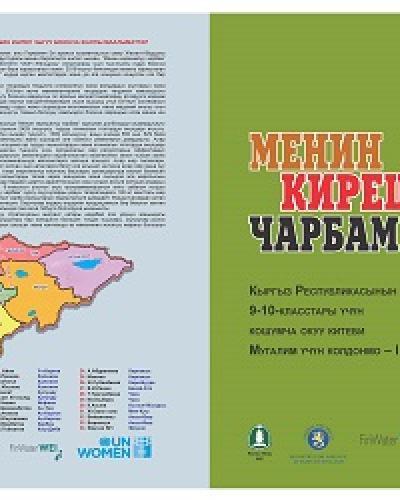"My Prosperous Farm" Manual

The course set out in my prosperous farm is an integrated resource syllabus aimed at the curriculum learning areas of economics, biology and geography. It also supports teaching aspects of the mathematics and handicrafts curriculum.
The production of the first edition of «My Prosperous Farm» in 2007 was financed from grant resources provided by Germany for GTZ to implement the Capacity Building Project for Sustainable Livelihoods. In 2013 GIZ in the Kyrgyz Republic graciously permitted UN Women Country Office in the Kyrgyz Republic to update, publish and make use of the updated version of “My Prosperous Farm”. The Rural Advisory Service (RAS) Jalalabad was commissioned by UN Women Country Office in the Kyrgyz Republic to update, expand and further engender My Prosperous Farm. The United Nations Peacebuilding Support Office (PBSO) made possible publication and introduction of the 2014 edition under the Building a Constituency for Peace Project. 2016 publication of the “My Prosperous Farm” is supported by government of Finland under “Livelihoods through participation and equal access to water” project implemented by UN Women Country Office in the Kyrgyz Republic. Materials published by UNICEF were used to produce additional chapters on sanitation.
My Prosperous Farm is a tool to prepare students in the 9th grade, who are about to complete their schooling, for productive and profitable self-employment.Students are given the opportunity to develop decision making skills, to examine effective farming and business enterprises and to develop an understanding of why some farms and businesses succeed and why others fail.
My Prosperous Farm is also designed to provide 9-10th grade students in Kyrgyzstan with a practical guide to the market economy. The skills required to engage in business are outlined and the student are encouraged to begin using these skills by starting a kitchen garden in a market economy context. The material and tasks have been developed to be delivered in an interactive teaching mode. This requires a cooperative effort by both students and teachers. Teachers will be using new teaching methods of instruction which involve students in participating, questioning and problem solving throughout the lesson.
1) Manuals in Russian:
Download Manual for teachers in Russian (1 part)
Download Manual for teachers in Russian (2 part)
Download Textbook for students in Russian
2) Manuals in Kyrgyz:
Download Manual for teachers in Kyrgyz (1 part)
Download Manual for teachers in Kyrgyz (2 part)
Download Textbook for sudents in Kyrgyz
3) Manuals in Uzbek:
Download Manual for teachers in Uzbek (1 part)
Download Manual for teachers in Uzbek (2 part)
Download Textbook for students in Uzbek
4) Manuals in Tajik:
Download Manual for teachers in Tajik (1 part)
Download Manual for teachers in Tajik (2 part)
Download Textbook for students in Tajik






